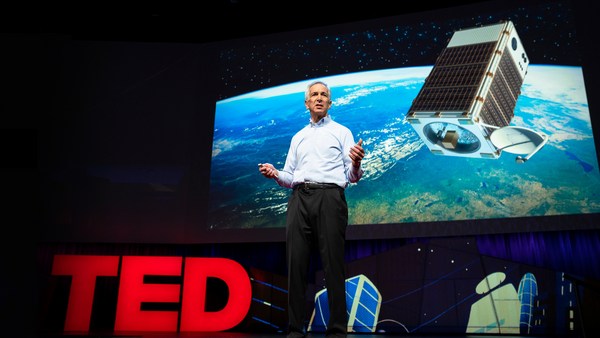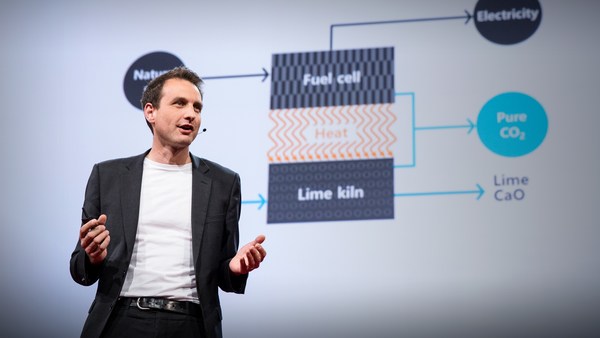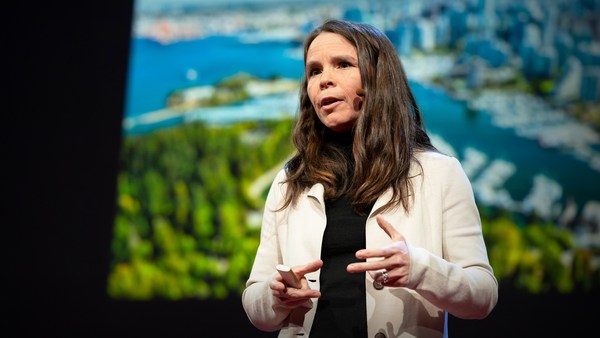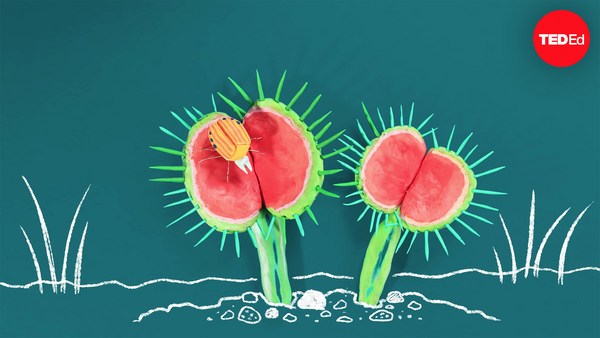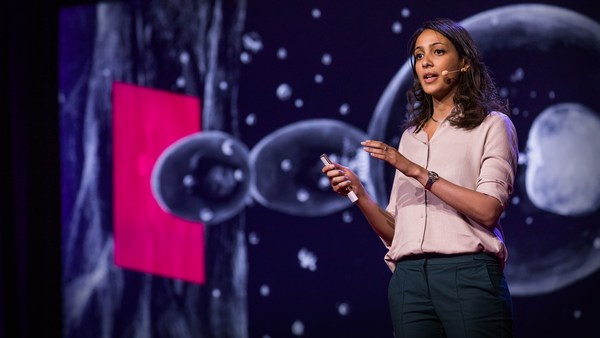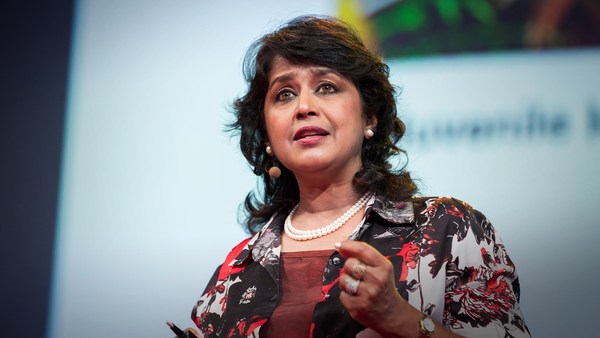I recently had an epiphany. I realized that I could actually play a role in solving one of the biggest problems that faces mankind today, and that is the problem of climate change. It also dawned on me that I had been working for 30 years or more just to get to this point in my life where I could actually make this contribution to a bigger problem. And every experiment that I have done in my lab over the last 30 years and people who work for me did in my lab over the last 30 years has been directed toward doing the really big experiment, this one last big experiment.
So who am I? I'm a plant geneticist. I live in a world where there's too much CO2 in the atmosphere because of human activity. But I've come to appreciate the plants as amazing machines that they are, whose job has been, really, to just suck up CO2. And they do it so well, because they've been doing it for over 500 million years. And they're really good at it. And so ...
I also have some urgency I want to tell you about. As a mother, I want to give my two children a better world than I inherited from my parents, it would be nicer to keep it going in the right direction, not the bad direction.
But I also ... I've had Parkinson's for the last 15 years, and this gives me a sense of urgency that I want to do this now, while I feel good enough to really be part of this team. And I have an incredible team. We all work together, and this is something we want to do because we have fun. And if you're only going to have five people trying to save the planet, you better like each other, because you're going to be spending a lot of time together.
(Laughter)
OK, alright. But enough about me. Let's talk about CO2. CO2 is the star of my talk. Now, most of you probably think of CO2 as a pollutant. Or perhaps you think of CO2 as the villain in the novel, you know? It's always the dark side of CO2. But as a plant biologist, I see the other side of CO2, actually. And that CO2 that we see, we see it differently because I think we remember, as plant biologists, something you may have forgotten. And that is that plants actually do this process called photosynthesis. And when they do photosynthesis -- all carbon-based life on our earth is all because of the CO2 that plants and other photosynthetic microbes have dragged in from CO2 that was in the atmosphere. And almost all of the carbon in your body came from air, basically. So you come from air, and it's because of photosynthesis, because what plants do is they use the energy in sunlight, take that CO2 and fix it into sugars. It's a great thing.
And the other thing that is really important for what I'm going to tell you today is that plants and other photosynthetic microbes have a great capacity for doing this -- twentyfold or more than the amount of CO2 that we put up because of our human activities. And so, even though we're not doing a great job at cutting our emissions and things, plants have the capacity, as photosynthetic organisms, to help out. So we're hoping that's what they'll do.
But there's a catch here. We have to help the plants a little ourselves, because what plants like to do is put most of the CO2 into sugars. And when the end of the growing season comes, the plant dies and decomposes, and then all that work they did to suck out the CO2 from the atmosphere and make carbon-based biomass is now basically going right back up in the atmosphere as CO2.
So how can we get plants to redistribute the CO2 they bring in into something that's a little more stable? And so it turns out that plants make this product, and it's called suberin. This is a natural product that is in all plant roots. And suberin is really cool, because as you can see there, I hope, everywhere you see a black dot, that's a carbon. There's hundreds of them in this molecule. And where you see those few red dots, those are oxygens. And oxygen is what microbes like to find so they can decompose a plant. So you can see why this is a perfect carbon storage device. And actually it can stabilize the carbon that gets fixed by the plant into something that's a little bit better for the plant.
And so, why now? Why is now a good time to do a biological solution to this problem? It's because over the last 30 or so years -- and I know that's a long time, you're saying, "Why now?" -- but 30 years ago, we began to understand the functions of all the genes that are in an organism in general. And that included humans as well as plants and many other complicated eukaryotes. And so, what did the 1980s begin? What began then is that we now know the function of many of the genes that are in a plant that tell a plant to grow. And that has now converged with the fact that we can do genomics in a faster and cheaper way than we ever did before. And what that tells us is that all life on earth is really related, but plants are more related to each other than other organisms. And that you can take a trait that you know from one plant and put it in another plant, and you can make a prediction that it'll do the same thing. And so that's important as well. Then finally, we have these little genetic tricks that came along, like you heard about this morning -- things like CRISPR, that allows us to do editing and make genes be a little different from the normal state in the plant.
OK, so now we have biology on our side. I'm a biologist, so that's why I'm proposing a solution to the climate change problem that really involves the best evolved organism on earth to do it -- plants. So how are we going to do it? Biology comes to the rescue. Here we go. OK.
You have to remember three simple things from my talk, OK? We have to get plants to make more suberin than they normally make, because we need them to be a little better than what they are. We have to get them to make more roots, because if we make more roots, we can make more suberin -- now we have more of the cells that suberin likes to accumulate in. And then the third thing is, we want the plants to have deeper roots. And what that does is -- we're asking the plant, actually, "OK, make stable carbon, more than you used to, and then bury it for us in the ground." So they can do that if they make roots that go deep rather than meander around on the surface of the soil.
Those are the three traits we want to change: more suberin, more roots, and the last one, deep roots. Then we want to combine all those traits in one plant, and we can do that easily and we will do it, and we are doing it actually, in the model plant, Arabidopsis, which allows us to do these experiments much faster than we can do in another big plant. And when we find that we have plants where traits all add up and we can get more of them, more suberin in those plants, we're going to move it all -- we can and we we will, we're beginning to do this -- move it to crop plants. And I'll tell you why we're picking crop plants to do the work for us when I get to that part of my talk.
OK, so I think this is the science behind the whole thing. And so I know we can do the science, I feel pretty confident about that. And the reason is because, just in the last year, we've been able to find single genes that affect each of those three traits. And in several of those cases, two out of the three, we have more than one way to get there. So that tells us we might be able to even combine within a trait and get even more suberin. This shows one result, where we have a plant here on the right that's making more than double the amount of root than the plant on the left, and that's just because of the way we expressed one gene that's normally in the plant in a slightly different way than the plant usually does on its own. Alright, so that's just one example I wanted to show you.
And now I want to tell you that, you know, we still have a lot of challenges, actually, when we get to this problem, because it takes ... We have to get the farmers to actually buy the seeds, or at least the seed company to buy seeds that farmers are going to want to have. And so when we do the experiments, we can't actually take a loss in yield, because while we are doing these experiments, say, beginning about 10 years from now, the earth's population will be even more than it is right now. And it's rapidly growing still. So by the end of the century, we have 11 billion people, we have wasted ecosystems that aren't really going to be able to handle all the load they have to take from agriculture. And then we also have this competition for land. And so we figure, to do this carbon sequestration experiment actually requires a fair amount of land. We can't take it away from food, because we have to feed the people that are also going to be on the earth until we get past this big crisis. And the climate change is actually causing loss of yield all over the earth.
So why would farmers want to buy seeds if it's going to impact yield? So we're not going to let it impact yield, we're going to always have checks and balances that says go or no go on that experiment. And then the second thing is, when a plant actually makes more carbon and buries it in the soil like that, almost all the soils on earth are actually depleted of carbon because of the load from agriculture, trying to feed eight billion people, which is what lives on the earth right now. And so, that is also a problem as well. Plants that are making more carbon, those soils become enriched in carbon. And carbon-enriched soils actually hold nitrogen and they hold sulphur and they hold phosphate -- all the minerals that are required for plants to grow and have a good yield. And they also retain water in the soil as well. So the suberin will break up into little particles and give the whole soil a new texture. And as we've shown that we can get more carbon in that soil, the soil will get darker. And so we will be able to measure all that, and hopefully, this is going to help us solve the problem. So, OK.
So we have the challenges of a lot of land that we need to use, we have to get farmers to buy it, and that's going to be the hard thing for us, I think, because we're not really salesmen, we're people who like to Google a person rather than meet them, you know what I mean?
(Laughter)
That's what scientists are mostly like.
But we know now that, you know, no one can really deny -- the climate is changing, everyone knows that. And it's here and it's bad and it's serious, and we need to do something about it. But I feel pretty optimistic that we can do this. So I'm here today as a character witness for plants. And I want to tell you that plants are going to do it for us, all we have to do is give them a little help, and they will go and get a gold medal for humanity.
Thank you very much.
(Applause)
(Cheers)
Thank you.
(Applause)
I finally got it out.
Chris Anderson: Wow. Joanne, you're so extraordinary. Just to be sure we heard this right: you believe that within the next 10 years you may be able to offer the world seed variants for the major crops, like -- what? -- wheat, corn, maybe rice, that can offer farmers just as much yield, sequester three times, four times, more carbon than they currently do? Even more than that?
Joanne Chory: We don't know that number, really. But they will do more.
CA: And at the same time, make the soil that those farmers have more fertile?
JC: Yes, right.
CA: So that is astonishing. And the genius of doing that and a solution that can scale where there's already scale.
JC: Yes, thank you for saying that.
CA: No, no, you said it, you said it. But it almost seems too good to be true. Your Audacious Project is that we scale up the research in your lab and pave the way to start some of these pilots and make this incredible vision possible.
JC: That's right, yes, thank you.
CA: Joanne Chory, thank you so much. Godspeed.
(Applause)
JC: Thank you.
